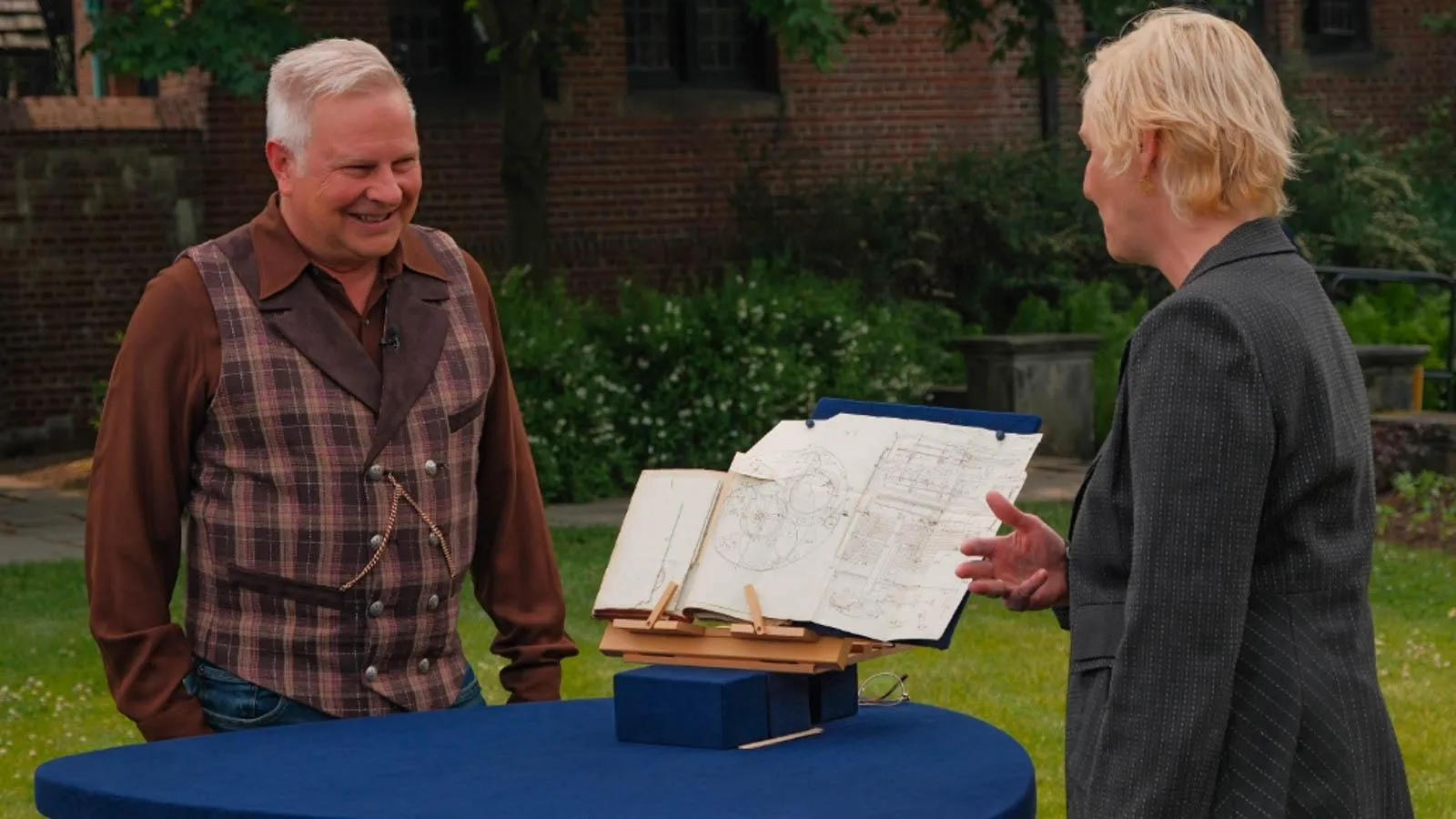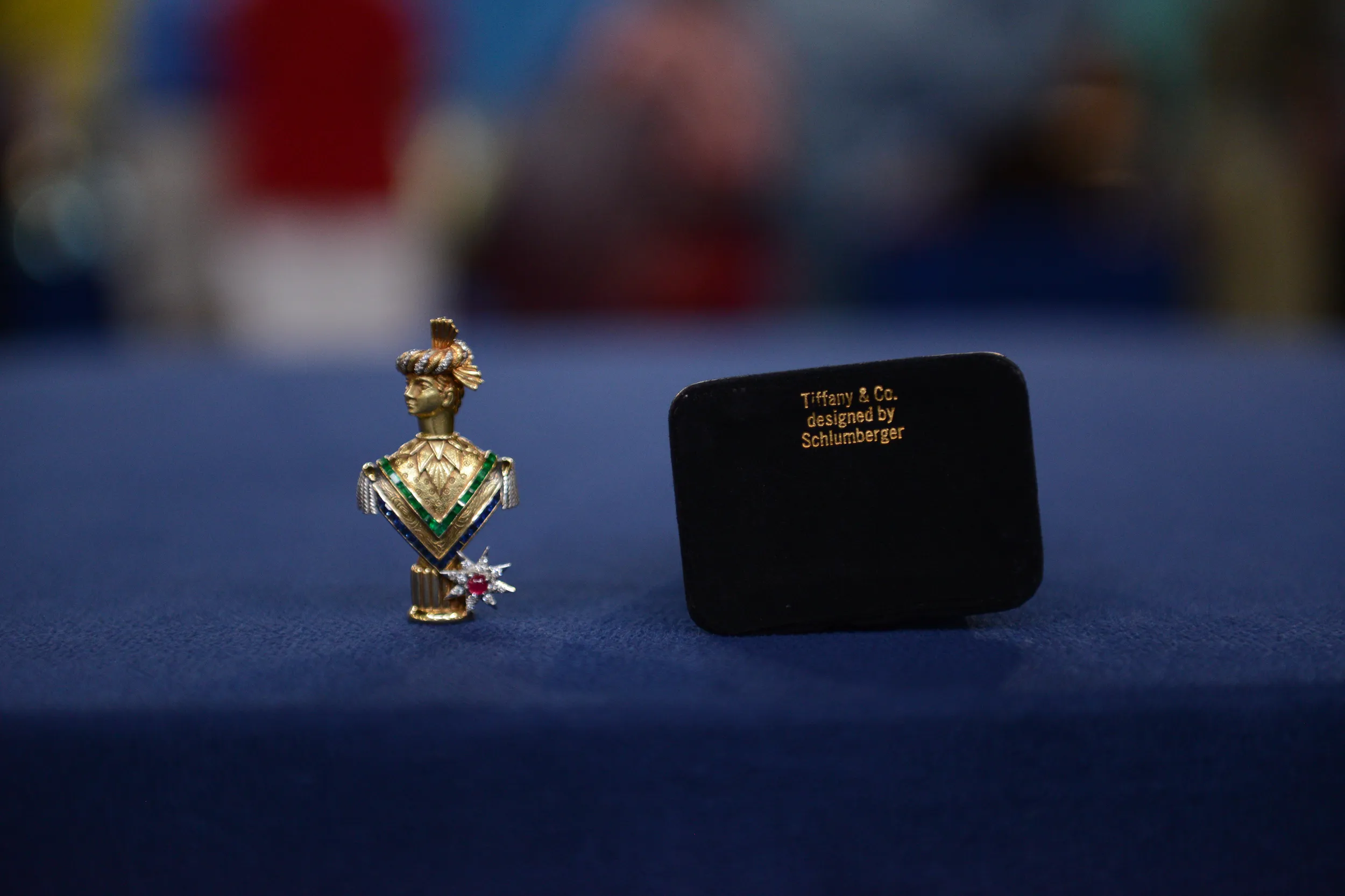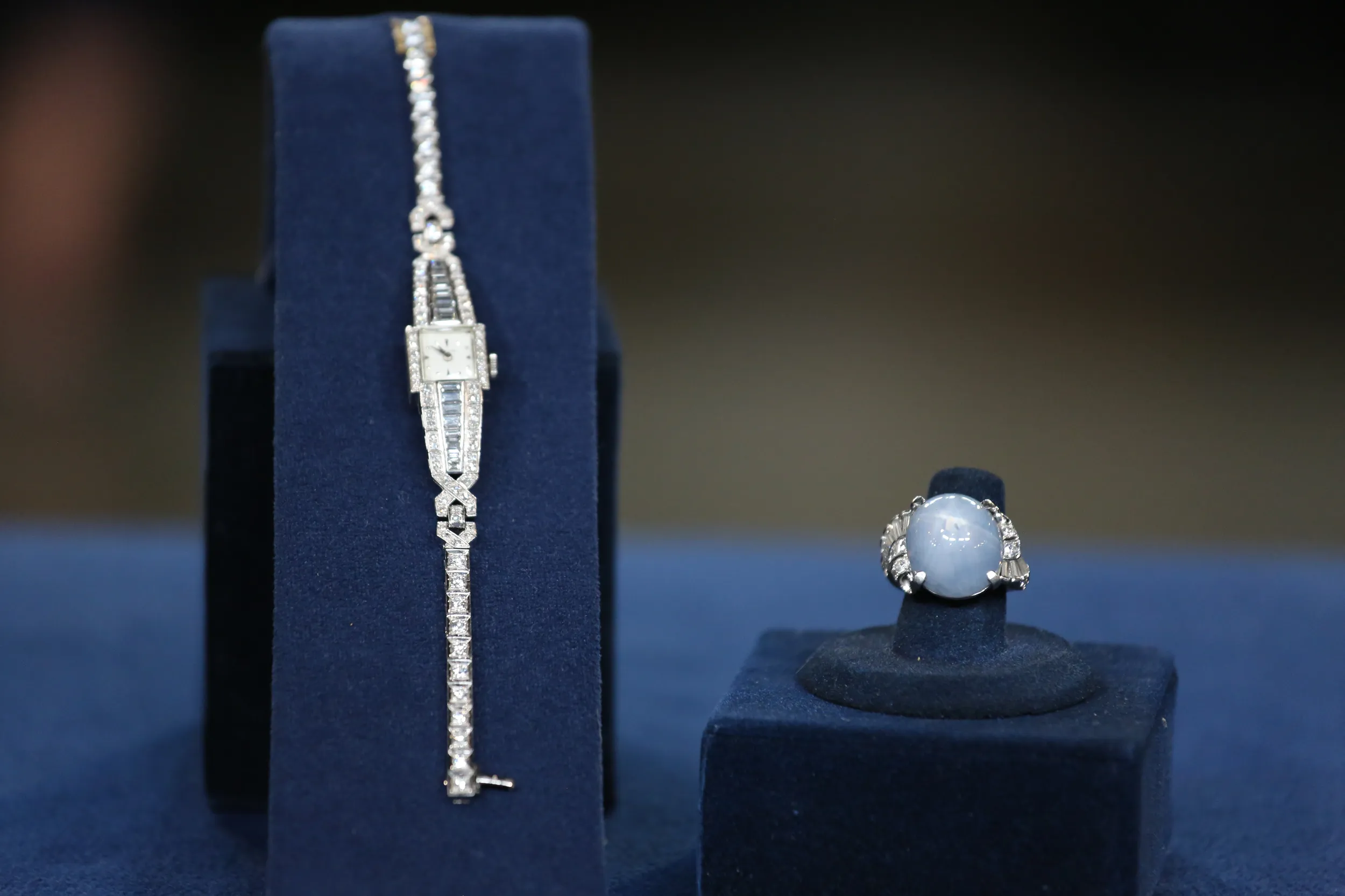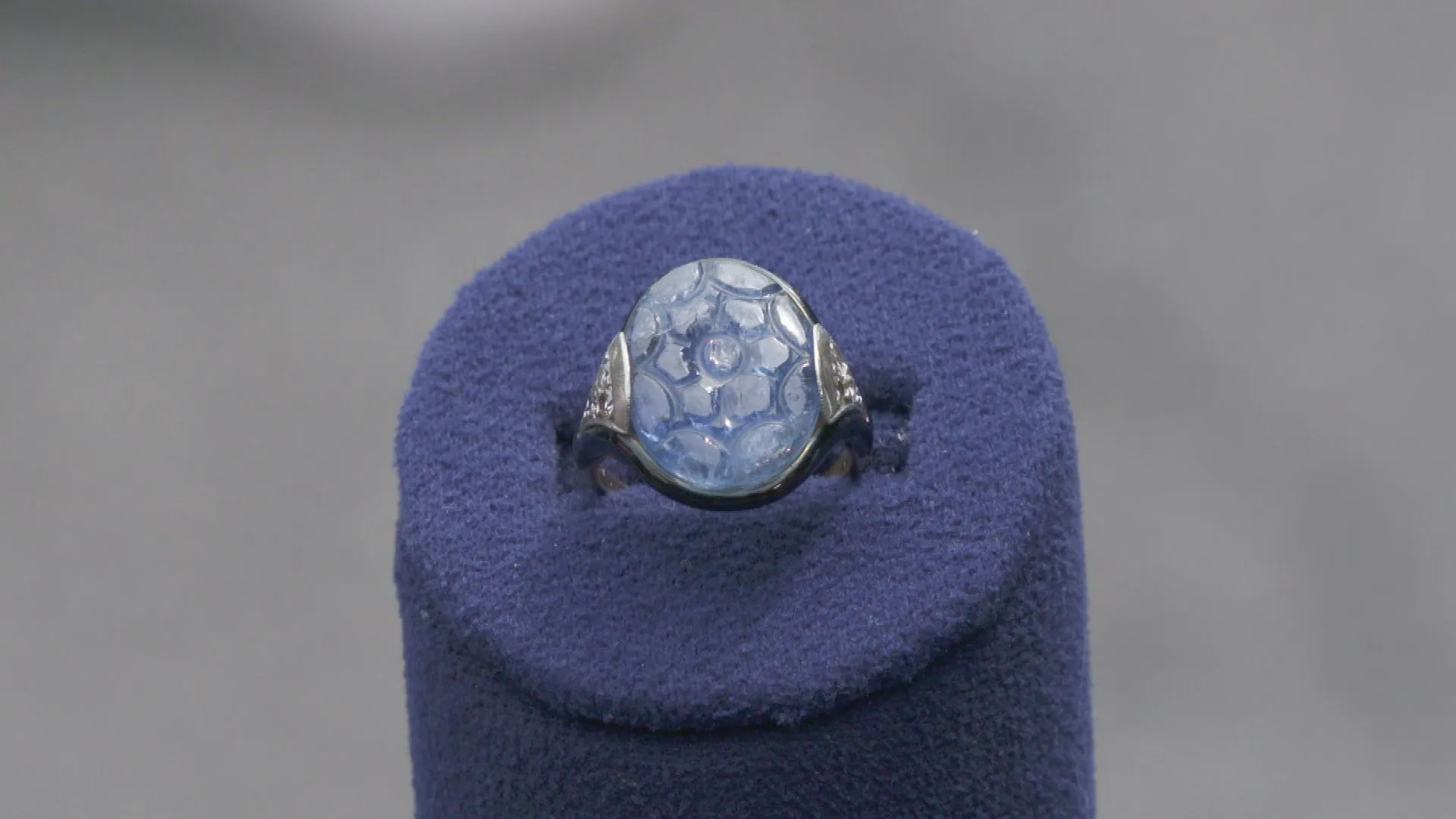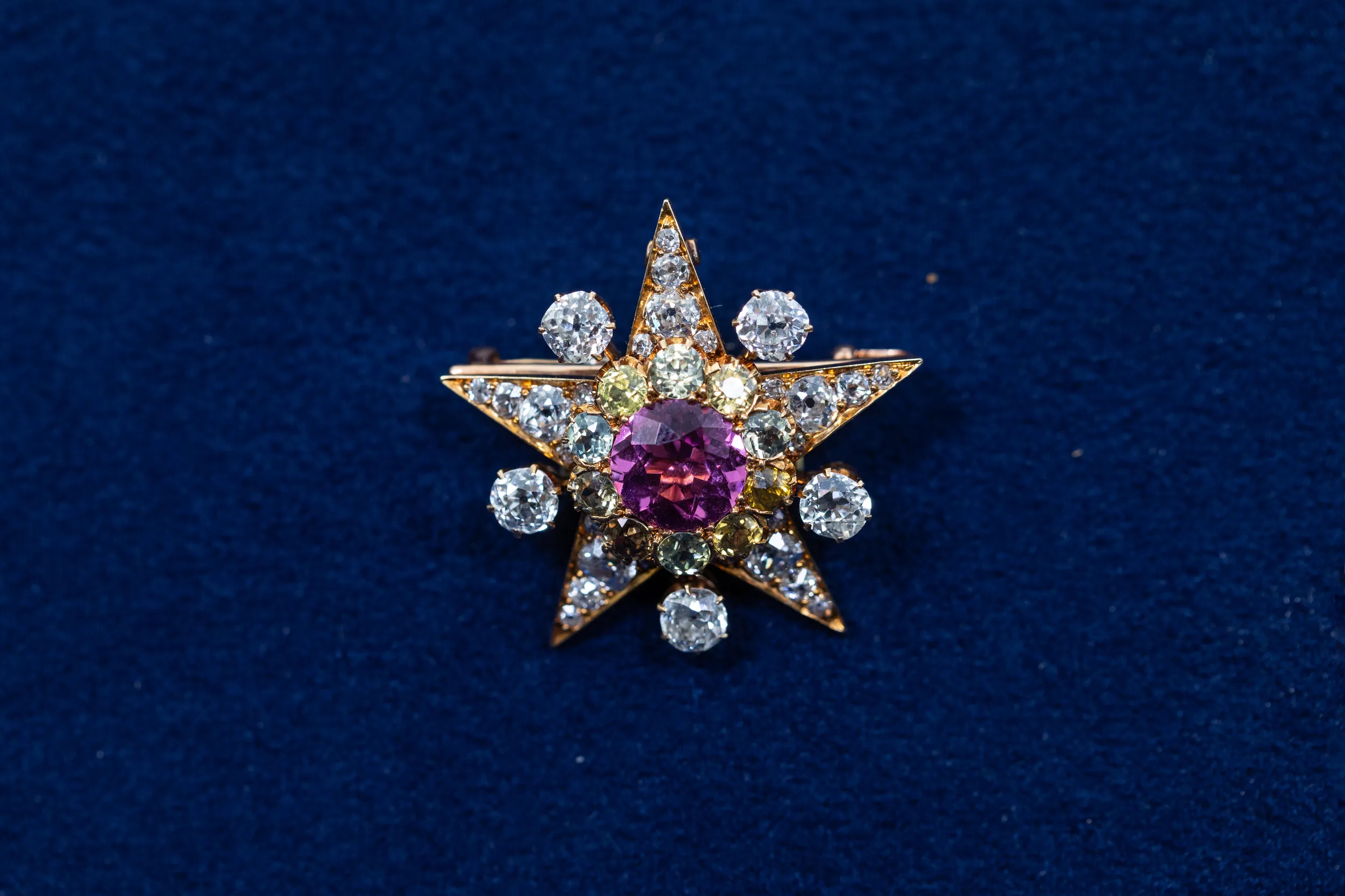GUEST: I brought in this pin. It was in my father's safe deposit box. And we had to open it when he passed. We actually had to, someone had to drill it open, and we found a bunch of jewelry that I had never seen before. And this is one of the things I found. I believe it really was my grandmother's jewelry. My family on both sides left Germany in the '30s in a kind of a hurry. And I believe, because of some of the other jewelry that was there, like a pocket watch, which I knew came from Germany. I believe this was from Germany as well.
APPRAISER: When I first saw this pin, there's something about how the light just hits that center stone and makes you go, "Whoa." Do you know anything about what that stone might be?
GUEST: My wife told me it might be a sapphire.
APPRAISER: Your wife is correct. It is a sapphire, and it's the kind of sapphire that, in the jewelry industry, we prize very, very much because, in my opinion, that color suggests that it's a sapphire from the Kashmir origin. In about 1880, there was a landslide in the Himalayas that unearthed this deposit of very high-quality sapphires. By about 1887, the mine had been depleted. I believe the last operation of getting stones out of these mines was in the late '20s, about 1927. So, these sapphires are quite rare. We can't know for sure without a laboratory report,
GUEST: Uh-huh.
APPRAISER: because what these labs do is they take a very high-quality, close-up, in-depth imaging of these stones, and they compare them to known samples from the area. So they can tell you with some certainty where they're from. However, in our experience, when you see the light hit that stone and you see that prized velvet blue, you kind of know it's probably gonna be from Kashmir. I would date the pin to about 1915. I think it's a classic art deco style with the Greek key and beautiful rose-cut diamonds. It's a cushion-cut stone. It probably, by formula, weighs about one carat. It's framed by some fancy-cut sapphires, as well. And I would like to point out there is one missing. To replace that stone, it's not going to be inexpensive to do. I can't determine where this was made because there's no marking on it that would suggest any country of manufacture.
GUEST: Okay.
APPRAISER: And we did test it: it is platinum-topped 14-karat gold. So, to me, that suggests American manufacturer.
GUEST: Okay.
APPRAISER: So, who knows where it came from. But I'm, I'm, I'm very glad it's here. If we get that lab report, and it is a Kashmir sapphire, and it is about a carat, I would have no problem estimating this for auction in the $15,000 to $20,000 range.
GUEST: Oh, my goodness. I guess we're gonna have to reopen the estate. I'm gonna have to divide this three ways.
APPRAISER: (chuckling) Well, if the sapphire is not from Kashmir, I would still say in the $5,000 to $7,000 ballpark.


